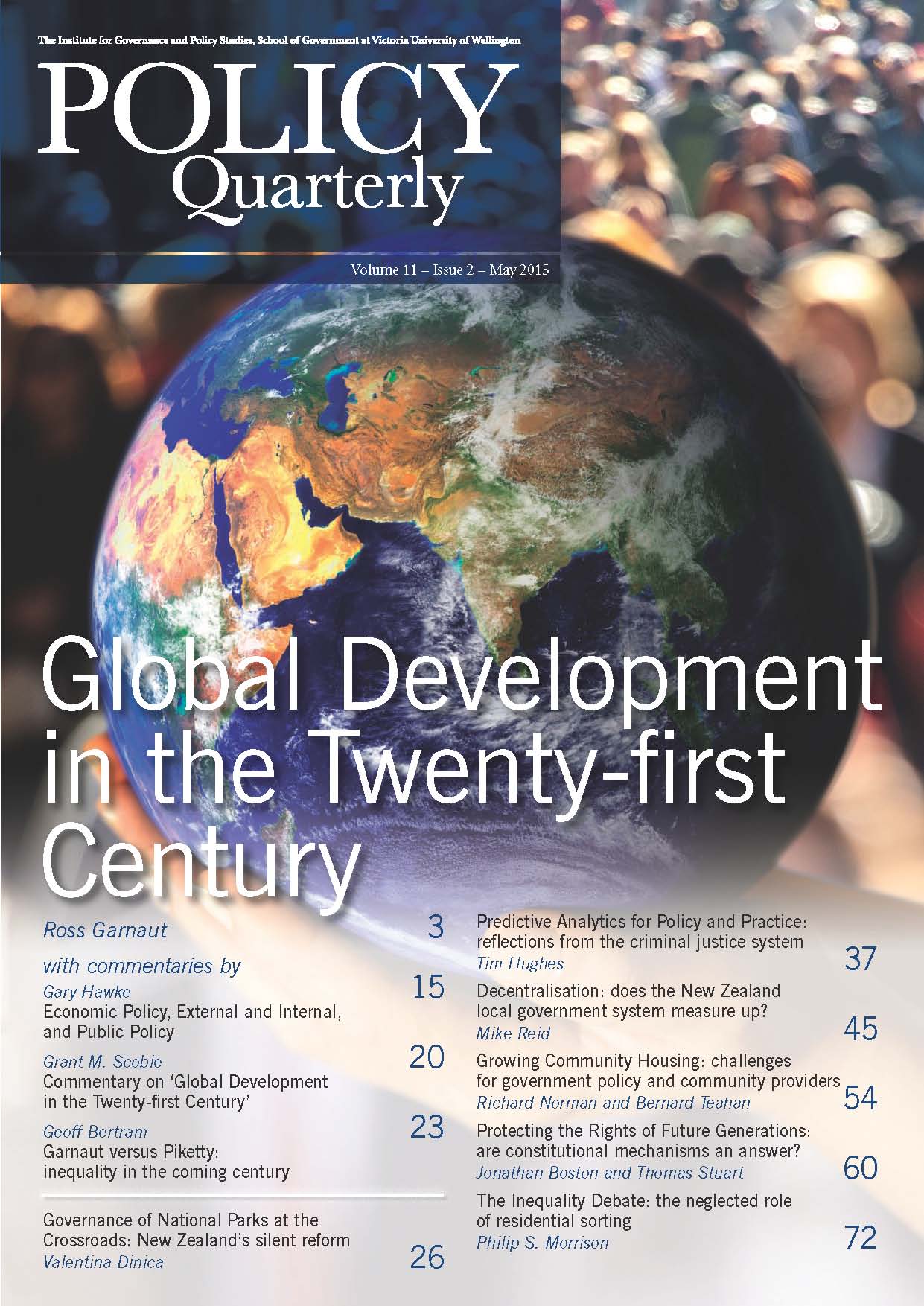The inequality debate: the neglected role of residential sorting
DOI:
https://doi.org/10.26686/pq.v11i2.4535Keywords:
geography of inequality, homogeneous groups, social mobility of the poor, ‘neighbourhood effects’, metropolitan areas, Property ownershipAbstract
One of the curious features of recent writing on income inequality is the scant attention paid to the geography of inequality, to the spatial separation of rich and poor. While it is recognised that social capital can be enhanced by residential sorting into more homogeneous groups, there is longstanding concern that this same residential sorting may exacerbate existing inequality by inhibiting the social mobility of the poor (Turner and Fortuny, 2009). The perspective I want to advance here differs from the standard ‘neighbourhood effects’ literature by focusing not on those living in poor neighbourhoods, but instead on the benefits residential sorting may yield for the rich – the way in which location decisions redistribute income to the upper end of the income distribution and hence further income (and wealth) inequality.
Downloads
Downloads
Published
Issue
Section
License
Permission: In the interest of promoting debate and wider dissemination, the IGPS encourages use of all or part of the articles appearing in PQ, where there is no element of commercial gain. Appropriate acknowledgement of both author and source should be made in all cases. Please direct requests for permission to reprint articles from this publication to Policy-Quarterly@vuw.ac.nz.



